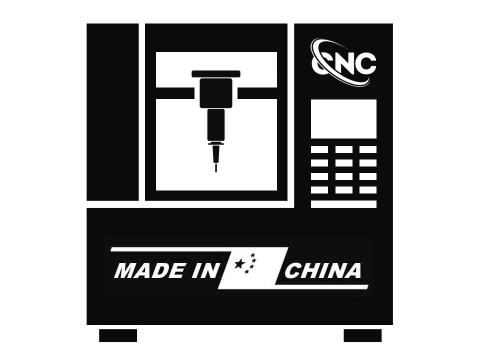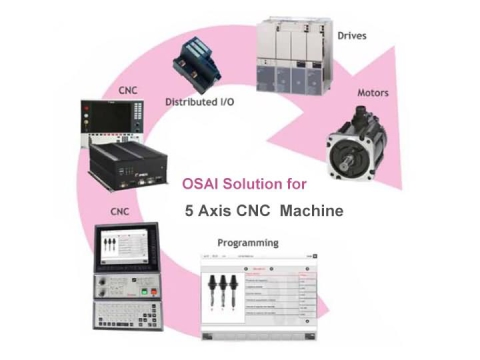A CNC (Computer Numerically Controlled) Programmer creates computer programs that are responsible for operating machines of different industries. In the era of technological advancement CNC machines are one of the latest additions. These machines require skilled hands to run properly and efficiently. A skilled CNC programmer is the key to operating them accurately.
Are you aiming to take CNC Programming as a career? Thinking about the future? Looking for the starting point to become a CNC programmer? Scroll no more. This is the right place to find your path to success.
So, today we are going to discuss how to become a CNC programmer, what the skills that one must acquire to become a CNC programmer are, the future, capabilities, and everything about it.

What Is CNC Programming?
CNC machines are very common these days in medium to heavy industries. These machines are fully automated and run by a software system. This software and the commands are given with particular programming methods. CNC (Computer Numerical Controlled) Programming is the process that gives instructions to control the CNC machines.
CNC programming involves writing a set of instructions, often referred to as G-codes and M-codes, which dictate the movements, speeds, tool changes, and other parameters necessary to produce a desired part or component with precision and accuracy.
Taking CNC programming can be a good career choice over time. The world is evolving so is the career choice. Now, how to become a CNC programmer, and where to start from?
Where To Start?
A good start can rapidly grow your career as a CNC programmer. The world economy depends on the industries and CNC machining has become a part and parcel of it. Therefore, this is a sector going to be overcrowded day by day.
To make a good jump over the career it is very important to know the basics of the job. It involves several key aspects. The given points are considered to be a complete formation for a CNC programmer.
• Educational Foundation.
• Technical Education.
• CAD/CAM Proficiency.
• Practical Experience.
• Continuing Education and Specialization.
• Build Skills and Qualities.
• Networking and Career Development.
Following these steps, one can take an effective leap in the journey to become a successful CNC Programmer. Let’s take a deep look into the qualifications.
Educational Requirements
Some formal educational certifications are the primary requirement at the beginning. A high school diploma along with some college coursework are needed to settle down with the post.
Both the high school diploma and technical programs are the fundamental basis for becoming a skilled programmer. To be more precise a few subjects are emphasized to get a good knowledge over. Subjects like mathematics, science, and computer skills are prioritized in this sector.
A strong foundation in mathematics and a good understanding is essential for CNC programming. Courses in physics and chemistry can provide valuable insights into fundamental scientific principles. Learning CAD/CAM software in CNC programming requires a good command of basic computer education, such as operating systems, file management, and software applications.
Technical Training Programs
To acquire the necessary skills and knowledge on CNC Programming technical training programs and education come in handy all the time. After completing high school or obtaining a GED equivalent, individuals interested in pursuing a career in CNC programming can explore various technical training options.
A good number of opportunities are available to achieve skills and expertise in CNC programming.
• Vocational Schools.
• Community Colleges.
• Apprenticeships.
• Online Courses and Self-Study.
Skills and Qualities of a Successful Programmer
Becoming a successful programmer takes more than just technical knowledge. It requires skills, qualities, and attributes for success in the field. A successful programmer is always innovative and looking to improve his knowledge. So, what else can make a programmer successful in the world of CNC programming?
• Analytical Thinking.
• Attention to Detail.
• Problem-Solving Attitude.
• Creativity and Innovation.
There are more to line up the series of skills and qualities of a successful CNC Programmer. They are briefly discussed below.
Mathematical Foundation
Geometry and trigonometry are the backbones of CNC programming. Both the programmers and machinists need to have a good command over the application of mathematical principles.
The interpretation of blueprints, toolpath generation, and calculating machining features all are within geometrical forms.
On the other hand, trigonometry is essential for calculating angles and distances, rotational machining operations, and tool offset compensation. Trigonometric functions such as sine, cosine, and tangent are used to calculate angles, distances, and positions of cutting tool movements in CNC programming.
CAD/CAM Software Proficiency
Proficiency in CAD/CAM software is critically important. Having a good knowledge and education in Computer-Aided Design (CAD) and Computer-Aided Manufacturing (CAM) software makes a programmer or a machinist more skilled.
Why it is so important?
CAD software is used to create the digital designs of the products and parts. CAD software facilitates the interpretation of engineering drawings and blueprints by providing tools.
Then CNC programmers extract the digital blueprint using the CAM software. Both the software includes simulation features. Therefore, the programmers can visualize and verify the machining operations before execution.
After that, the software converts the digital design into machine-readable G-code and M-codes. CAD/CAM software allows for customization and optimization. Finally, the collaboration of the software with other software tools delivers the précised production as instructed.
Hands-On Experience
Though theoretical knowledge is necessary for programming there is no alternative to practical experience in this field. Hands-on experience gives twice the expertise learned only from books.
The practical application completes the theoretical knowledge. Putting theory into practice allows individuals to acquire knowledge of real-world problem-solving and machining scenarios. By troubleshooting issues, resolving errors, and optimizing machining processes, individuals develop critical problem-solving skills essential for success in the field.
Exposure to industry standards and practices through internships and apprenticeships is a great way to develop practical knowledge that sharpens the skill. Besides, this can help one build confidence over time. Throughout the journey, It becomes a great achievement to acquire a wide network that opens up career opportunities.
Problem-Solving Skill Development
CNC programmers must have strong problem-solving skills to troubleshoot issues and optimize the machining process.
Facing issues with the machine and programming is very common in the manufacturing industry. So, the skill of finding the root cause of the issue and the ability to solve the problem is an essential part of the job. Analyzing complex data, interpreting error messages, and evaluating machining results requires analytical thinking.
Adaptability and innovation are two fine aspects of developing problem-solving skills. There’s often more than one way to solve a problem. A creative and innovative programmer will always seek for better application of the knowledge.
Other two important tasks can be optimizing the machining process and collaborating and communicating with other individuals and machinists.
Other Skills to Achieve the Goal
The more the programmer is skilled the better the opportunities are to achieve a brighter career. So, it takes no asking what else can make it better. Some additional skills and expertise are always a goodwill to your service.
Specialization Areas
CNC programmers get the opportunity to explore a wide range of specialization areas each with its unique set of challenges, techniques, and applications. Some of them are:
Milling: 3-axis milling that includes tasks like contouring, pocketing, and drilling. 4-axis and 5-axis milling techniques for simultaneous movement of the cutting tools.
Turning: CNC lathe programming involves operations such as facing, turning, grooving, and switch machining as well.
Multi-axis machining: Simultaneous 4-axis and 5-axis machining enables CNC machines for simultaneous movement along multiple axes. Through programming the machines can act as multi-tasking machines.
Industry-Specific Applications: Industry-specific application areas require specialized skills. There are automotive machining, aerospace machining, and medical device manufacturing, each needs special skill and Expertise.
Software Proficiency beyond CAD/CAM
Alongside two core software CAD/CAM CNC machining utilizes some other software as well. From post-processing CAM output to interfacing with machine control systems this software plays an important role.
CAM post-processing software converts the output into machine-specific G-code or M-code instructions.
G-code and M-code are the primary languages used to control CNC machines. G-code commands tool movements, speeds, feeds, and other machining parameters.
Besides, expertise in CAD interoperability and data exchange brings strength to your skills.
Communication Skills
The importance of effective communication skills in CNC programming is very crucial. To collaborate successfully with engineers, machinists, and other stakeholders a proper and communicative communication skill are necessary.
Understanding projects and requirements and the interpretation of design specifications need better communication skills. A CNC programmer with good communication skills can solve any issue within half of the time.
Translating design intent and collaborating with machinists for guidance and instructions also requires good command over communication skills. Besides, expressing ideas and patterns with stakeholders to make them understand a project or sharing knowledge on any ideas or problem-solving issues requires this skill very much.
Certifications and Credentials
Having industry-recognized certification is a valuable asset as a CNC programmer. Obtaining certifications and credentials holds significant value.
A CNC programmer's knowledge, abilities, and competencies in areas like CAD/CAM software competency, programming techniques, machining processes, and safety measures are generally assessed through standardized examinations that are part of industry-recognized certifications.
Certificates serve as proof of skill expertise and sometimes experience. Industry-recognized certificates enhance career prospects. These pieces of paper also demonstrate a lifelong professional development and learning commitment.
Career Outlook and Advancement Opportunities
A survey by the US Bureau of Labor Statistics shows that a good chance of 27% job growth is leading to CNC programming as an advanced career choice. According to the U.S. Bureau of Labor Statistics, the median annual wage for CNC programmers was $60,962 in February 2024.
Experienced CNC programmers can hold supervisor or managerial roles according to their qualities which increases the salary by at least 15%.
Finally, we can say that CNC programming offers a rising technical job career. It is a trending choice for many now.





